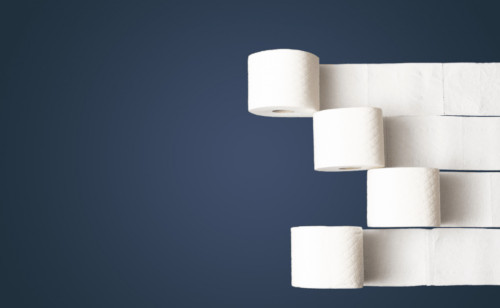Functional constipation, incontinence and encopresis
Chronic functional constipation (FC) is a common pathology in childhood, with an estimated prevalence of about 12%. The term functional refers to the fact that there is no underlying organic pathology that justifies the presence of constipation.
Symptoms and causes of functional constipation
Patients with chronic functional constipation present with pain with defecation, bulky stools and bowel movements every 3-4 days. In more severe cases, children with functional constipation (FC) may have no bowel movements for up to 7-10 days. Functional constipation (FC) usually manifests initially with painful bowel movements (hard, bulky stools or anal fissure) that lead the child to voluntarily withhold stool.

To avoid another painful bowel movement, the child contracts the anal sphincter or buttock muscles, hiding in a corner, rocking from side to side or fidgeting with each urge to defecate. Parents often mistake these withholding behaviors for straining to defecate.
Stool impaction causes fluid reabsorption, which makes the stool harder, larger, and more painful to pass. Over time, as the rectum distends to accommodate the retained fecal mass, rectal sensation decreases and fecal incontinence secondary to impaction by fecalomas (encopresis) may develop. This vicious cycle usually coincides with the time of sphincter control, changes in routine or diet, stressful events, illness, lack of accessible toilets, or occurs in a busy child who postpones defecation.

Diagnosis of functional constipation
Most patients with functional constipation present a transitory constipation that improves after adjusting diet, water intake and physical activity and does not require drug treatment. A minority of patients require treatment with osmotic laxatives for a period of time that will be gradually withdrawn when a normal intestinal rhythm is reestablished.
Once possible organic causes of constipation have been excluded by the pediatrician (celiac disease, thyroid disorders, food intolerances, etc.), a small percentage of children will not respond adequately to dietary changes or regular laxatives. This subgroup of patients with functional constipation will require referral to the pediatric surgeon for diagnostic tests that can help identify the functional disorder causing the constipation.
Tests that can help guide the diagnosis in functional constipation (FC) are:
- Opaque enema/defecography: Radiological test with contrast that is used to identify the degree of dilatation, changes in caliber or stenosis and anatomy of the pelvic floor during defecation. It is a quick test and does not require sedation.
- Anorectal manometry: Functional test in which we identify possible obstructive patterns during the defecation maneuver, such as pelvic dyssynergia or high sphincter pressures. It does not require sedation, although in order to obtain all the necessary information on pelvic floor function, patient collaboration is required (children from 5-6 years of age). In younger children who do not cooperate, it is performed to identify sphincter pressure and the presence of inhibitory anal reflex.
- Colonic manometry or colonic time measurement: There are several techniques to identify colonic motility. This information is relevant to know if the colon "moves slowly" in one segment or if the problem is generalized to the whole colon. This measurement can be performed by colonic manometry (sedation and colonoscopy are required for catheter placement), serial measurement with radiopaque markers or by radioisotope markers.
- Endoanal ultrasound: Endoanal ultrasound is performed without sedation with a cylindrical probe introduced through the anus. With this test we want to identify the anatomy of the internal and external sphincter, which in cases of chronic constipation may present hypertrophy.
Treatment of functional constipation
Depending on the results of the tests mentioned above, the following treatments may be indicated:
1. Stimulant laxatives:
This type of laxative activates colonic motility, especially useful in patients with megarectum or long-standing constipation with encopresis and lack of response to osmotic laxatives.
2. Pelvic floor rehabilitation or Biofeedback:
This treatment is indicated in patients presenting with pelvic dyssynergia or obstructive defecation (incoordination during defecation). The purpose of biofeedback is to restore a normal defecation pattern using visual and verbal feedback techniques. This consists of training children to relax the external anal sphincter while increasing abdominal pressure during defecation attempts (pushing). Visual feedback is provided by placement of an anorectal manometry catheter to show abdominal and anal pressures or by external application of electromyography electrodes. These pressures are reflected on a cartoon screen, as the pressure increases the cartoon rises and as the pressure decreases the cartoon descends on the screen. Initially, 5-10 sessions are indicated.
3. Botulinum toxin injection in the anal sphincter:
In situations where there is an increase in basal pressure in the anal sphincter, the injection of this toxin is indicated, which "blocks" the sphincter and can help defecation. The toxin maintains its effect for 4-6 months.
4. Rectal enemas:
When the patient presents a marked dilatation of the colon and encopresis, treatment with laxatives may no longer be effective. In these cases, an enema program may be indicated for 3-6 months to reduce the caliber of the colon and recover its motility. Once these months have elapsed, laxative treatment can be tried again.
Team of the unit of functional constipation, incontinence and encopresis


 +34 912 627 104
+34 912 627 104 Contact
Contact







